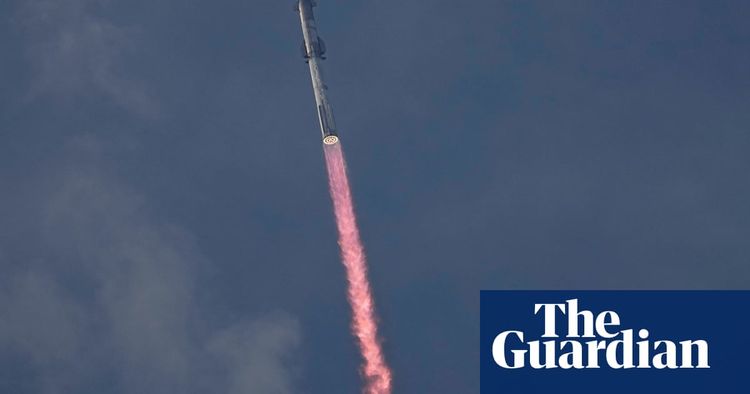SpaceX launches third Starship test flight

The Starship spacecraft, created by SpaceX, has completed its third test flight. This rocket is the largest and most potent ever constructed, and its purpose is to transport astronauts to the moon and eventually to Mars.
The space system, which is 120 meters long and weighs approximately 5,000 metric tonnes when filled with fuel, blasted off from SpaceX's Starbase in Boca Chica, Texas, located on the Gulf of Mexico. It entered into outer space shortly after takeoff.
The spacecraft's 33-engine booster, affectionately dubbed Super Heavy, and the cruise ship designed to eventually transport up to 100 astronauts have both exploded during two previous attempts. These two vehicles, when combined, are 10 meters taller than the Saturn V rocket that launched humans to the moon in 1969.
SpaceX takes on more risk than NASA when it comes to testing its spacecraft prototypes, and has a strategy that involves pushing them past their limits as often as possible. For example, it took four minutes to complete its first Starship launch, while the second one lasted eight minutes and actually reached space. By regularly engaging in flight testing, SpaceX hopes to gather useful data that will allow it to create a stronger and more reliable rocket.
Before their third launch attempt, SpaceX issued a statement to temper expectations, emphasizing that each of the flight tests are experimental in nature, and not conducted in a controlled setting like a laboratory or test stand. Instead, the flights are designed to evaluate the functionality of the hardware in a real-world, in-flight environment to facilitate greater understanding and improvements.
The third rocket mission had various objectives, including relighting the Raptor engine in space for the first time, opening a payload door, and bringing the Starship back to Earth through a controlled re-entry into the Indian Ocean. The upper and lower sections of the Starship are created to return to Earth safely by themselves during future missions, which will be a cost-effective approach compared to manufacturing new pieces for every expedition.
Elon Musk, the wealthy founder of SpaceX, dreams of embarking on a journey into space never before taken with the help of Starship. He refers to the spacecraft formerly known as the BFR using a humorous-sounding moniker, which may imply its immense size. Ultimately, Musk aims to make it possible for people to become inhabitants of more than one planet, known as a "multiplanetary species." To achieve this, Musk has set his sights on initiating a mission to colonize Mars, which would provide humanity with a fallback option if a catastrophic event occurred on Earth, such as a takeover by self-aware AI or a calamitous asteroid impact.
NASA has inked a deal with SpaceX to transport astronauts, among them the first female, to the moon by 2026. However, given the known delays, it is probable that it will be rescheduled. Various other Starship systems are presently being created for potential experiments.
Before, Musk mentioned that it could cost anywhere from $2 billion to $10 billion to fully develop Starship. It's predicted that launching each spacecraft could cost millions of dollars.
The organization earns profits by conducting space launches of satellites and transporting astronauts to the International Space Station. It has revealed its future goals to utilize the spacecraft for business purposes on the planet, assuring journeys from London to Tokyo that will not take more than sixty minutes.





























































